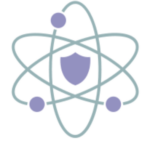The Internet of Things is an idea that holds all things, such as refrigerators, consumer applications, televisions, lights, cars and more, eventually will be connected to the Internet. But once those things are connected, how will they connect with each other?
The Linux Foundation has created the AllSeen Alliance, a group dedicated to connecting the Internet of Things devices and systems with other Internet of Things products. The group is calling this trend the “Internet of Everything.”
“You can’t have an Internet of Things if the things can’t communicate with each other,” said Steve Eisenstadt, Linux Foundation spokesman. “It won’t work if individual vendors pursue siloed visions. The Internet of Everything connotes innovation beyond simple machine-to-machine communication to a level of highly intelligent interoperability among devices, systems, services and the people they serve.”
The alliance was created to develop one shared universal framework that allows the connectivity of all devices, regardless of their manufacturer or operating system. Without one widespread framework, the company said the Internet of Things won’t meet its full potential.
“To achieve the promise of the Internet of Everything—a state of ubiquitous communication among a variety of everyday objects and devices—you need all these things to be on the same page in terms of compatibility,” Greg Burns, the AllSeen Alliance Technical Steering Committee’s chair wrote on the organization’s blog.
The universal interoperability framework is based on the AllJoyn open-source project. AllJoyn, initially developed by Qualcomm, is an open framework that allows companies to design interoperable products that can discover, connect and interact with other AllJoyn-enabled projects. The beta of AllJoyn, version 14.06, was just recently released.
“AllJoyn is designed to address complex problems that exist in enabling peer-to-peer and IoE applications such as discovery, message routing, security, interoperability, etc., and simplifies how devices interact with one another creating a much better user experience,” the alliance wrote on its website.
Developers are expected to use the framework to build apps and services that can interact with other devices and apps; manufacturers are expected to use the framework to ensure interoperability across all devices, systems and services; and consumers will be able to enjoy a seamless experience across all devices with the framework, according to the alliance.
The alliance’s Technical Steering Committee is made up of alliance members to administer and oversee the framework, but as an open-source project, anyone can contribute. The alliance currently has 51 members, including Cisco, LG, Microsoft, Panasonic, Qualcomm, Sharp and Silicon Image.
More information about the alliance is available here.






